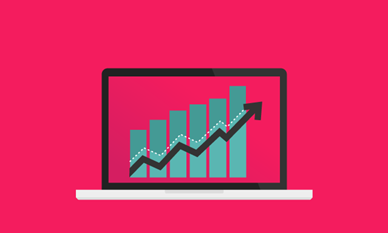Everything is digital these days... why not healthcare too?
If you’ve booked a taxi, ordered a takeaway or completed a banking transaction recently, chances are you’ve probably used a smartphone app to do so. And, whilst the provision of healthcare is clearly far more serious, there’s increasingly no reason why digitisation shouldn’t be embraced within PMI, writes Greg Levine, Vitality’s Chief Operations and Growth Officer.
Digitally led solutions that deliver the products and services that we commonly use are now so much the norm that consumer expectations are also shifting. Increasingly, consumers expect to be able to access services on demand and in their own time, through smartphone apps or other digital platforms.
This has been led in part by the widespread use and ubiquity of smartphones, as well as wider trends shaping our world. With more people spending more of their time ‘online’, services have also shifted online.“By adopting digitisation into claims processes and care pathways, we can deliver countless benefits for health insurance clients.”
The rise of digital healthcare
When it comes to healthcare and wellbeing, we’ve seen an explosion in recent years in digital and app-based services and tools.
Whether it’s virtual GP services, which Vitality pioneered in the private medical insurance market, mental wellbeing tools like Headspace or apps to monitor conditions like diabetes, more people are willing to embrace and use digital healthcare and wellbeing services1.
During the recent Covid-19 pandemic we particularly saw this with the widespread use of apps to monitor and track infections, as well as support the roll-out of vaccinations.
Elsewhere, the NHS, has sped up the roll out of its own patient app. In January this year it was reported that over 30 million people had now signed up to the NHS App.
More broadly, there are now in excess of 300,000 different health apps available worldwide and the global digital health market is expected to be worth £320bn by 2024, as the adoption of these services becomes the norm2.
Embracing digital solutions
Of course, the sensitive nature of healthcare means people often desire human interaction with a medical practitioner, to provide expertise and reassurance. Nor should we assume that everyone is comfortable using digital services.
When it comes to delivering better outcomes for patients, the key is to harness technology and digitally led solutions in a way that compliments and streamlines the end-to-end care journey.
When adopted with the needs of patients and consumers in mind, technology can help to improve and speed up access to everything from diagnostics, treatment and aftercare. Digital services can help to better surface medical information to patients whenever they need it and serve to free up the time of medical staff, to focus more on the necessary patient interactions.
Delivering better client outcomes
At a time of unprecedented pressure on the NHS, people are rightly concerned about access to treatment and waiting times. This has led to a growing demand for private medical insurance4.
Digital servicing integrated into a PMI proposition can help to alleviate many of those challenges clients might face when accessing healthcare elsewhere and deliver better outcomes overall. Furthermore, this can also help to reduce some of the pressure on the NHS.
PMI can also act as a far more effective means of bringing together the right tools and support and deliver a truly joined-up, holistic healthcare solution, rather than the more fragmented approach to digital healthcare that we see elsewhere.
First end-to-end online claims journey
By adopting digitisation into claims processes and care pathways, we can deliver countless benefits for health insurance clients.
Vitality’s Care Hub for example, launched in 2021, enables members to start claims and receive immediate authorisation online.
Over the last 12 months we’ve extended the service to be fully integrated with the Vitality GP app; and to offer online authorisation and consultant bookings for all members and types of claims. Clients can now get an email within around 15 minutes of their Vitality GP appointment, prompting them to select a consultant and book their onward care.
Through this digitised approach to claim servicing, we’re delivering the first end-to-end online claims journey available in the market.
Elsewhere, digitisation of our services has enabled us to provide clients with easier access to a broad array of other health and wellbeing benefits, with high levels of overall engagement.
Members can access numerous Vitality Programme partners and rewards through the Member app and there is strong evidence that Vitality’s proposition is resonating with clients and delivering excellent outcomes for our customers – both returning them to health, helping them lead a healthy lifestyle, and delivering value.
With population health in the spotlight and growing consumer expectations around digital access and a greater willingness to engage with digital healthcare services, there’s never been a better time for the industry to embrace digitisation. Not only can we provide better access and speedier claims processing, but also deliver improved health outcomes overall.
Where to next?
-
How to make employee wellbeing programmes inclusive
Everyone is different. When it comes to employee wellbeing programmes, a one-size-fits-all approach is not enough.
-
How PMI can unlock employee health and wellbeing engagement
With declining rates of health continuing to cause poor productivity, engaging and supporting employees health and wellbeing has never been more important.
-
Insights Hub
Our Insights Hub brings you our range of adviser content - from video series to articles blogs.


